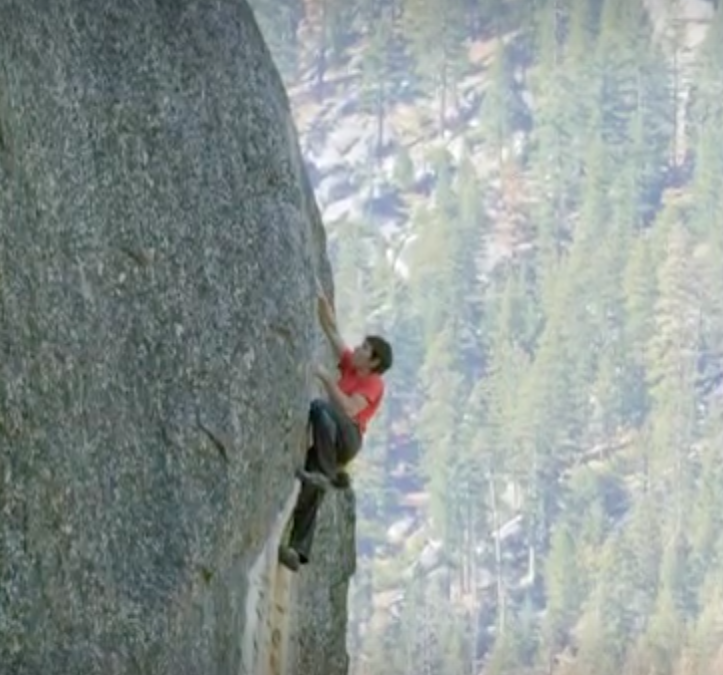“What if he falls?”
On June 3, 2017, Alex Honnold became the first person ever to free solo El Capitan, a vertical rock formation rising almost 3000 feet above the valley floor in Yosemite.
Let’s break that down: in climbing, “free” means climbing without artificial assistance — no ropes, none. “Solo” means doing that climb alone. Honnold climbed and studied “El Cap” again and again for years, using ropes, exploring different routes, practicing again and again on the hardest parts, constructing a mental map of every death-defying foot of the way. He was not certain when he would try to make the climb. At least once he started out and then quit, sensing that the time was not right. Then on the morning on June 3, 2017, he set out and kept going….
In the mean time, a film crew led by famed mountaineering photographer Jimmy Chin, had been doing the roped practice climbs with Alex. He and his colleagues were also adventurers: imagine climbing a 3000 foot rock face, even with ropes…. Now imagine yourself doing the climb while carrying heavy camera equipment and trying to position yourself on the wall to get just the right shot of free-soloing Alex Honnold going past.
In his wonderful “MasterClass” instructional video on photography Jimmy Chin describes his apprehension about what he was planning to do. Alex was his friend. What if while Jimmy was filming, Alex should suddenly “fall through the frame”? Stay tuned….
The short film here is about the filming of “Free Solo.” This 10-minute clip conveys the extraordinary drama of this adventure — and the extraordinary beauty of Yosemite. One of the things I love about the clip is the investment, the devotion, of the film crew members. You can see that they were on the edge of tears (if not beyond) while filming “Free Solo.”
And what does this story have to do with our study of the national parks as a whole?
Try this: there are many themes in the history of the national parks, and one is the lure of adventure. Take Truman Everts: he did not, like Alex Honnold, choose his adventure. It chose him, so to speak, for those thirty-seven days of peril in Yellowstone. But risk and adventure are an integral part of the National Parks story. Could it be that just as we set aside parks in an effort to preserve something raw and elemental in our past; some of us embrace adventure and even an element of danger in the parks as a kind of homage to our pioneer past?
Herewith the film from YouTube:

